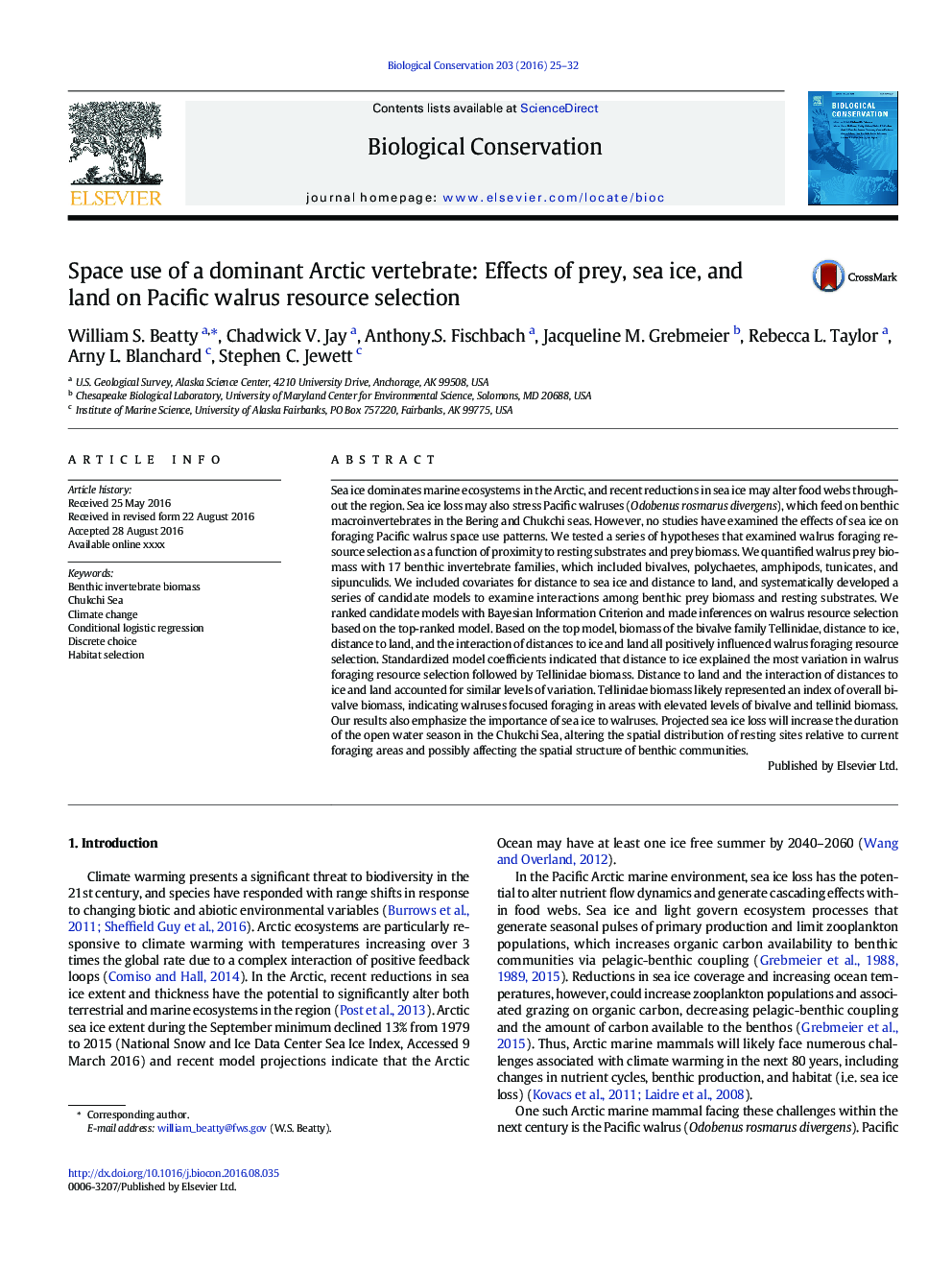| کد مقاله | کد نشریه | سال انتشار | مقاله انگلیسی | نسخه تمام متن |
|---|---|---|---|---|
| 6298052 | 1617898 | 2016 | 8 صفحه PDF | دانلود رایگان |
عنوان انگلیسی مقاله ISI
Space use of a dominant Arctic vertebrate: Effects of prey, sea ice, and land on Pacific walrus resource selection
ترجمه فارسی عنوان
استفاده از فضایی از قطب شمال قطب شمال: اثر شکار، یخ دریا و زمین در انتخاب منابع دریایی اقیانوس آرام
دانلود مقاله + سفارش ترجمه
دانلود مقاله ISI انگلیسی
رایگان برای ایرانیان
کلمات کلیدی
زیست توده بی مهره بنتسی، دریای چوکچای، تغییر آب و هوا، رگرسیون منطقی شرطی، انتخاب گسسته، انتخاب محل سکونت،
موضوعات مرتبط
علوم زیستی و بیوفناوری
علوم کشاورزی و بیولوژیک
بوم شناسی، تکامل، رفتار و سامانه شناسی
چکیده انگلیسی
Sea ice dominates marine ecosystems in the Arctic, and recent reductions in sea ice may alter food webs throughout the region. Sea ice loss may also stress Pacific walruses (Odobenus rosmarus divergens), which feed on benthic macroinvertebrates in the Bering and Chukchi seas. However, no studies have examined the effects of sea ice on foraging Pacific walrus space use patterns. We tested a series of hypotheses that examined walrus foraging resource selection as a function of proximity to resting substrates and prey biomass. We quantified walrus prey biomass with 17 benthic invertebrate families, which included bivalves, polychaetes, amphipods, tunicates, and sipunculids. We included covariates for distance to sea ice and distance to land, and systematically developed a series of candidate models to examine interactions among benthic prey biomass and resting substrates. We ranked candidate models with Bayesian Information Criterion and made inferences on walrus resource selection based on the top-ranked model. Based on the top model, biomass of the bivalve family Tellinidae, distance to ice, distance to land, and the interaction of distances to ice and land all positively influenced walrus foraging resource selection. Standardized model coefficients indicated that distance to ice explained the most variation in walrus foraging resource selection followed by Tellinidae biomass. Distance to land and the interaction of distances to ice and land accounted for similar levels of variation. Tellinidae biomass likely represented an index of overall bivalve biomass, indicating walruses focused foraging in areas with elevated levels of bivalve and tellinid biomass. Our results also emphasize the importance of sea ice to walruses. Projected sea ice loss will increase the duration of the open water season in the Chukchi Sea, altering the spatial distribution of resting sites relative to current foraging areas and possibly affecting the spatial structure of benthic communities.
ناشر
Database: Elsevier - ScienceDirect (ساینس دایرکت)
Journal: Biological Conservation - Volume 203, November 2016, Pages 25-32
Journal: Biological Conservation - Volume 203, November 2016, Pages 25-32
نویسندگان
William S. Beatty, Chadwick V. Jay, Anthony.S. Fischbach, Jacqueline M. Grebmeier, Rebecca L. Taylor, Arny L. Blanchard, Stephen C. Jewett,
